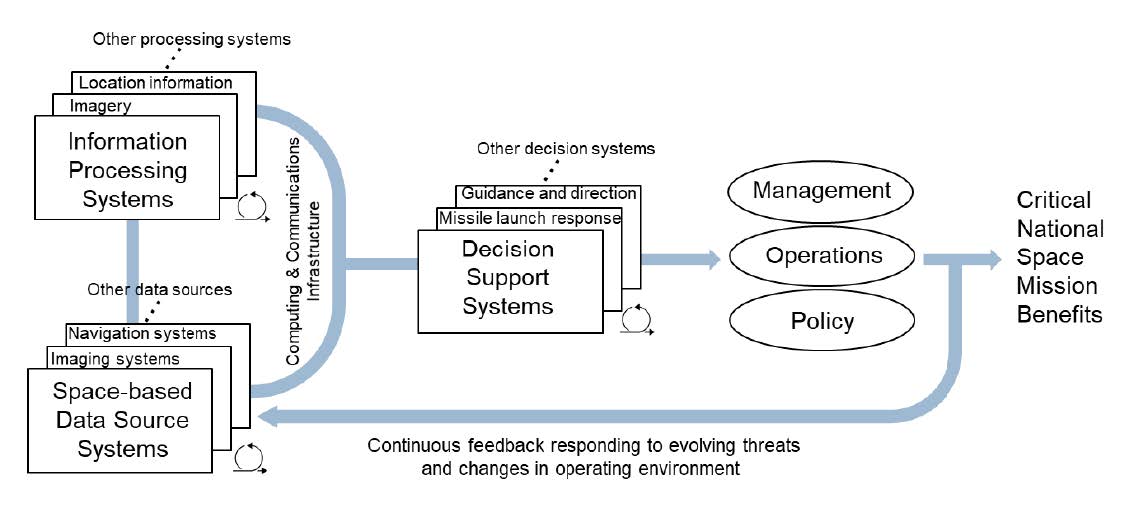| Agenda | |
| Working Groups | |
Working Group A |
Space Enterprise Integration Working Group: Integrating International Launch Capabilities Using AI |
|
|
Wednesday – February 26, 2025 1:00 PM – 5:00 PM PT |
Description |
This working group will address challenges and opportunities associated with enterprise integration for innovative space capability use cases including space and ground systems linked to decision support systems to advance U.S. leadership in space in an era of U.S. Strategic Competition. The working group will focus on government leveraging commercial solutions for national missions with emphasis on integrating data/systems/networks with/among owners and operations – all in the national interest. With a focus on Space Enterprise Integration, the discussion will address the use of automation, augmentation, and AI/ML in the applications consistent with Advanced Capabilities outlined in AUKUS Pillar II including: • Federated Testbeds and Proving Grounds for Space • Interoperable Spaceports • Sun Synchronous Concept Design Center for Space Control The working group will consist of two parts. Part 1 will be a moderated panel session with presentations and discussions related to strategic foundational elements for space enterprise integration, outlining applicability to several use cases to advance Allied space capabilities in the national interest. Part 2 will be a town hall meeting to include key representatives from space-faring agencies, including U.S. Space Force, National Aeronautics and Space Administration (NASA), commercial space, and Allied partners. Part 2 will include a community discussion on these select uses cases with expert opinions from panelists. Space enterprise integration needs and benefits, and approaches to identify and mitigate threats, risks, gaps, and seams to sustaining operations of space enterprise systems of systems in the face of multiple stakeholders and continuous change will be discussed. The workshop will address Space Enterprise Integration in the context of maintaining up-to-date information for real-time operations through horizontal and vertical integration of systems interconnections, data interchange, data product exchange, and distributed computing environments across participating organizations in continuously changing operating environment with dynamically evolving threats and opportunities. For the purposes of this workshop session, the following descriptions apply to this context:
Discussions for space enterprise use cases will apply a common framework for information and data flow spanning data source systems, information processing systems, and decision support systems, with associated computing and communications infrastructure consistent with Figure 1 below.
A workshop report compiling briefings, observations, findings, and recommendations will be a deliverable of the session. |
| Leads |
Lori Gordon, and Ron Birk, The Aerospace Corporation |
Biographies |
Lori Gordon, Systems Director in the Space Enterprise Evolution Directorate (SEED), leads enterprise integration initiatives focused on international collaboration, commercial ventures, and legislative and regulatory frameworks in support of space infrastructure and economic growth, security, and resilience, all in the national interest. She is also a Partner with The Aerospace Corporation’s Center for Space Policy and Strategy and is a Fellow at the National Security Institute. Ms. Gordon holds Bachelor of Science in Urban Geography from the University of Maryland, College Park, and a Master of Public Administration from the University of Massachusetts, Amherst. Ron Birk, Principal Director, Space Enterprise Evolution Directorate in the Civil Systems Group, is responsible for aligning emerging market needs with Aerospace SE&I FFRDC capabilities for civil and commercial applications across the space and related complex systems enterprise. Ron has 41 years of experience in management, business development, program management, and strategic planning associated with advancing societal benefits of space systems of systems. Mr. Birk served as co-chair of the U.S. Group on Earth Observations developing the Strategic Plan for the U.S. Integrated Earth Observation System. Mr. Birk serves as President of the Board of the American Astronautical Society (AAS) , ad Co-Chair of the CONFERS Technical Working Group, and Chair of Washington Executive Space Council. Ron earned a B.S. in Physics from the University of Notre Dame. |

